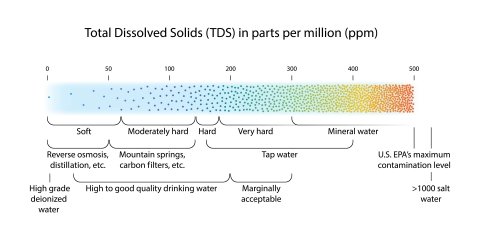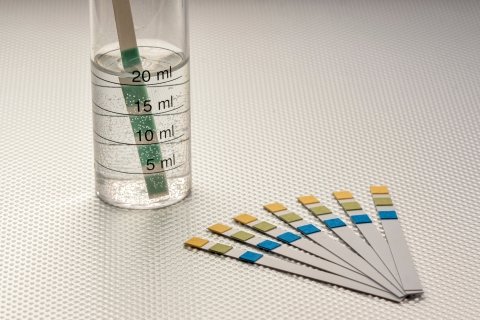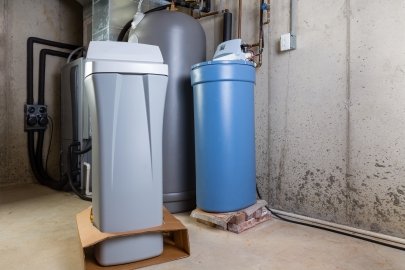Hard water is a common phenomenon. While it poses no health risks, it affects the day-to-day life of the household in any number of ways. Dishes might emerge from the dishwasher polka-dotted with hazy white spots, fresh laundry can feel like sandpaper to the touch, and plumbing fixtures like faucets develop a chalky film.

What Is Hard Water?
Before reaching the municipal supply, water absorbs mineral content from rocks and soil. Some of this content, like calcium and magnesium, are hard minerals that not only make soap less effective. They also gradually lead to limescale buildup, which, when it occurs within pipes, reduces water pressure and flow, and only gets worse over time. Hard water also negatively impacts the efficiency and lifespan of any appliance that requires water for operation. This might not be such a big deal for a coffeemaker, but it has the same effect on water heaters and refrigerators.
Water hardness or softness is measured using grains per gallon (gpg), where one grain is equal to 0.002 ounces of calcium carbonate dissolved in 1 gallon of water.
- 0–3 gpg is considered soft water.
- 3.5–7 gpg is considered moderate and ideal.
- >7.5 gpg is regarded as hard water and should be treated with a water softener.
Hard Water Solutions
With hard water, it pays to be proactive. Correcting a hard water problem can eliminate a slew of inconveniences as well as help prevent a variety of plumbing headaches that cost a bundle to resolve. Keep an eye out for the telltale signs of hard water, of course, but even better is to conduct a little research. Start by contacting the local municipality or water utility; many provide a free report detailing what’s in the local water. Alternatively, purchase a water test kit at a local home center, hardware store, or online retailer. If it turns out the water is hard, purchasing a water softener will correct the situation.
Water Testing
Different testing methods measure water hardness on different scales, either grains per gallon (GPG) or parts per million (PPM). The question isn’t whether or not water contains any calcium or magnesium, but whether concentrations of those minerals are high enough to affect the home's plumbing. While trace amounts are to be expected, water with calcium or magnesium levels at or above 7 GPG or 120 PPM officially qualifies as hard. If it turns out that water tests as hard, follow the lead of other homeowners in the same situation and consider installing a water softener.
Subscribe to receive updates from Energy Saver, including new blogs, updated content, and seasonal energy saving tips for consumers and homeowners.



